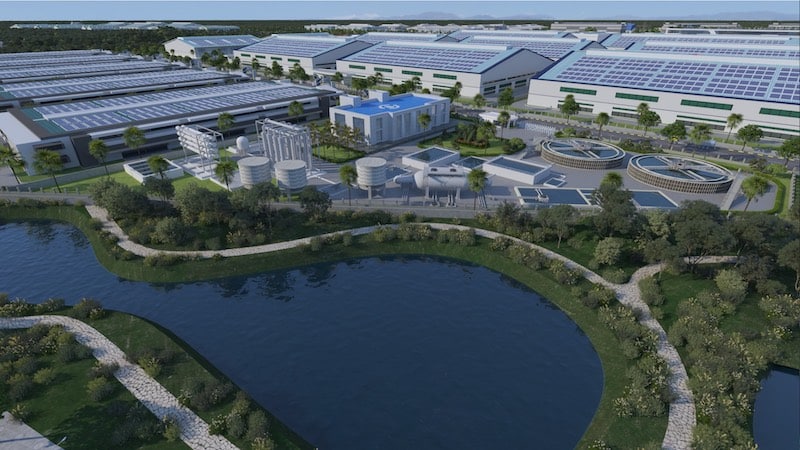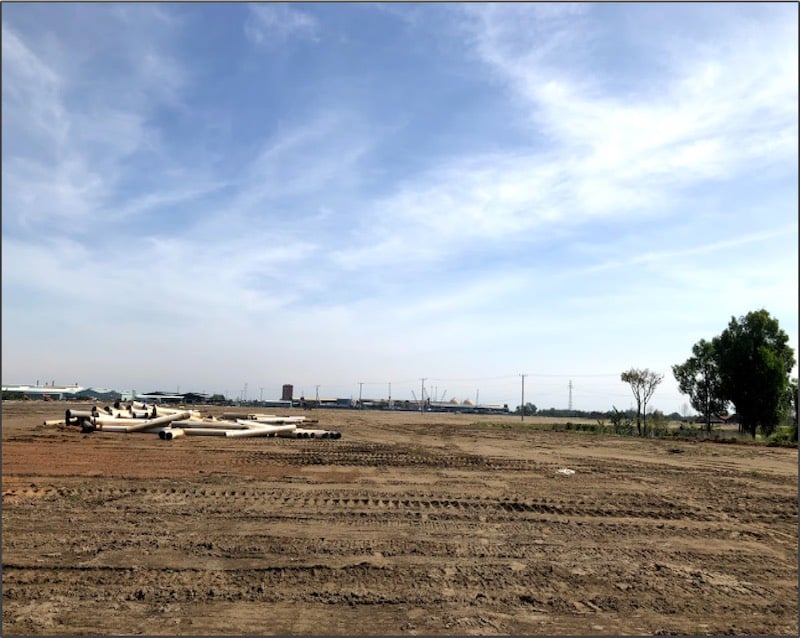
Warehouse space for lease in Southeast Asia
The industrial and logistics sectors are undergoing a massive transformation, and the supply chain will keep developing throughout 2022 as businesses strive to integrate resilience into their networks in order to protect themselves from potential disruptions.
Warehouses are always extraordinarily huge places, but in order to meet contemporary e-commerce demand to deliver to last-mile consumers, they must now grow much larger. In fact, more than three-quarters of the businesses in Southeast Asia that use warehouse space now want (and need) to grow in the next three years. This shows that there will be a huge need for warehouse space that will only grow.

Warehouse for rent in Southeast Asia
As demand continues to rise, so will competition. But that isn’t all the story. Warehouses will now need to become more automated and larger in size. This is especially widespread in areas where industrial space is restricted, resulting in the construction of 20-story warehouses.
As a result, not only is there a greater need for warehouse space, but also for high-quality warehouse space. Infrastructure will need to be larger, higher and more efficient while also being less expensive.
Automation, especially in warehouses, has made it possible for big companies to hire fewer people while improving the efficiency of their operations as a whole.
The employment of robotics and automation technologies to improve warehouse operational efficiency is predicted to drive growth in warehouse space even further in 2021.
Many logistics and transportation organizations in Southeast Asia are looking for warehouse management solutions to help them speed up procedures and depend less on manual labor.
However, many people are concerned about these developments since people are rapidly being replaced by machines, resulting in an increase in unskilled, jobless labor. However, as consumers buy more and more things online, retailers will be compelled to continue growing, investing in additional warehouse space, and relying on technology breakthroughs such as automation to stay competitive and in business.
Read more: The Leasing Cold Storage in Southeast Asia is Expected To Grow Significantly
Asean has the proper recipe for a “dramatic” e-commerce boom, with manufacturing value chain pivots favoring Vietnam, Indonesia, and Thailand, while Singapore and Malaysia remain the region’s important logistical centers.
Asean’s logistics sector is growing, making it one of the most attractive consumer markets. This is due to the region’s growing wealth, large number of young people, strong digital connections, and high mobile penetration.
As commerce between Southeast Asian countries and the rest of the globe expands, there will be more chances for logistics service providers in the area to interact with one another in order to get goods to customers and boost their efficiency.
Southeast Asia’s e-commerce sector will develop at a compound annual growth rate (CAGR) of 34% to US $102 billion by 2025, up from US $5.5 billion in 2015. Indonesia is expected to be the leader in this growth, with a CAGR of 41% from 2015 to 2025, as it shifts its focus to second-tier cities and rural areas with high potential for growth.
When consumption grows, so does the demand for contemporary warehouse leasing in Southeast Asia, which is why many of the expected benefactors of expanding e-commerce are real estate owners of modern logistics facilities.

Southeast Asia’s e-commerce sector will develop at the fast rate
As the epidemic drives the move to omnichannel shopping, e-commerce will continue to increase warehouse leasing in Southeast Asia demand in 2021. Urban fulfillment centers, particularly those near residential areas, will continue to be popular.
Therefore, to accommodate the higher range of items in today’s e-commerce world, e-commerce enterprises typically require up to three times the capacity of traditional warehouse users.
Despite the catastrophic effects of the epidemic on global supply chains, the ASEAN market offers opportunities for the region’s businesses.
When ASEAN countries speed up economic recovery steps after a pandemic, such as market access, supply chain security, and making trade easier, Southeast Asian countries will be in a great position to take advantage of the opportunities in this market.
Over the next decade, the Southeast Asia market is expected to provide up to 70% of the world’s new consumer population. By 2030, tech-savvy millennial and Generation Z customers will account for 75% of the region’s GDP. As the digitalization of Southeast Asia speeds up, the e-commerce business is expected to bring in $172 billion by 2025.
Before the epidemic, the economies of these growing Asian markets were growing quickly, but reform and rebuilding are needed to keep that pace up.
With these good predictions for the economies of Southeast Asia, there are many opportunities for businesses to grow or start new ones in the area.
One of Southeast Asia’s most important GDP drivers is medium-to high-tech manufacturing. Its acceleration is one of the region’s economic growth goals. The growth of this sector over the next 10 years will be helped by new technologies that increase jobs, productivity, and operations.
When this becomes the norm in Southeast Asian markets, there will be more opportunities for enterprises trying to capitalize on the region’s increasing middle and upper-middle classes. As more people from these countries move to cities, their tastes will change and their purchasing power will rise. This will lead to changes in consumer habits in the coming years.
Keeping up with ever-changing consumer habits in the area, as well as supporting market recovery initiatives in Southeast Asian countries, will fuel Southeast Asia’s recovery and growth. It will also help to enhance the region’s economic prospects, bolstering Southeast Asia’s position as the world’s leading growing market.
The industrial real estate market in Vietnam is heating up as foreign direct investment (FDI) flows grow.
Investors are drawn to new-generation industrial zones and clusters with logistics, warehouses, and manufacturers, particularly in service metropolitan regions. Many industrial park investors have prioritized service difficulties.
Vietnam is a better place to live because real estate prices are lower and there are a lot of new developments that will increase the supply of homes in the future.

Vietnam warehouse leasing market is attracting new foreign investors
Competive labor costs and an enhanced legal environment are two more factors luring investors to the nation.
Prices, a large number of famous developers, labor resources, a suitable transportation network, easy access to foreign seaports and airports, and state incentives are among the factors that make industrial real estate in Vietnam appealing.
Other factors drawing investors to the warehouse leasing in Southeast Asia include political stability, ample business possibilities, and local government backing, as well as the country’s administrative reform efforts.

Excellent Industrial Land for Lease
– Location: Binh Xuyen, Vinh Phuc
– Total area: 295 ha
– Vacant area: TBC ha
– Price: Contact
– Key features:
+ Convenient transportation links
+ Green & Smart Technology
+ Attractive incentives
+ Tech-driven platform
+ “One-stop” services
+ Abundant labour force

High quality factory for rent in Hai Phong
– Location: Hai An District, Hai Phong City
– Total area: 106,000 m2
– Vacant area: 59,778 m2
– Price: Contact
– Key features:
+ Cat Bi International Airport, Hai Phong Seaport, and motorways are all nearby. Tax incentives
+ Supportive investors
+ Comprehensive infrastructure

Industrial Land for Lease in Long An
– Location: Long An, Vietnam
– Total area:119 ha
– Vacant area: 78 ha
– Price: Contact
– Key features:
+ Investment tax incentives
+ Strategic location
+ Supportive developers: legal services, HR process,…
+ Completed infrastructure
+ Besides the warehouses for rent, Savills Industrial also provides high-quality cold storage in Southeast Asia.
Read more: The Rising Trend of Small size Warehouse for Lease in Southeast Asia
Companies are getting increasingly aggressive to seize the big opportunity as demand for warehouse leasing in Southeast Asia grows fast across the area. As a result, multinational businesses are making strategic investments to build a regional logistics network, such as new distribution facilities, smart warehouses, and so on.
Savills Industrials is honored to be Vietnam’s premier industrial real estate service provider. We are eager to assist our clients in choosing whether renting or selling their warehouse or industrial property is the best option in today’s market. Thanks to a team of top professionals in Vietnam, we provide exceptional consulting services from industry specialists with in-depth market expertise.
If you want to lease a warehouse for your business with the help of a consultant, contact Mr. John Campbell right now!